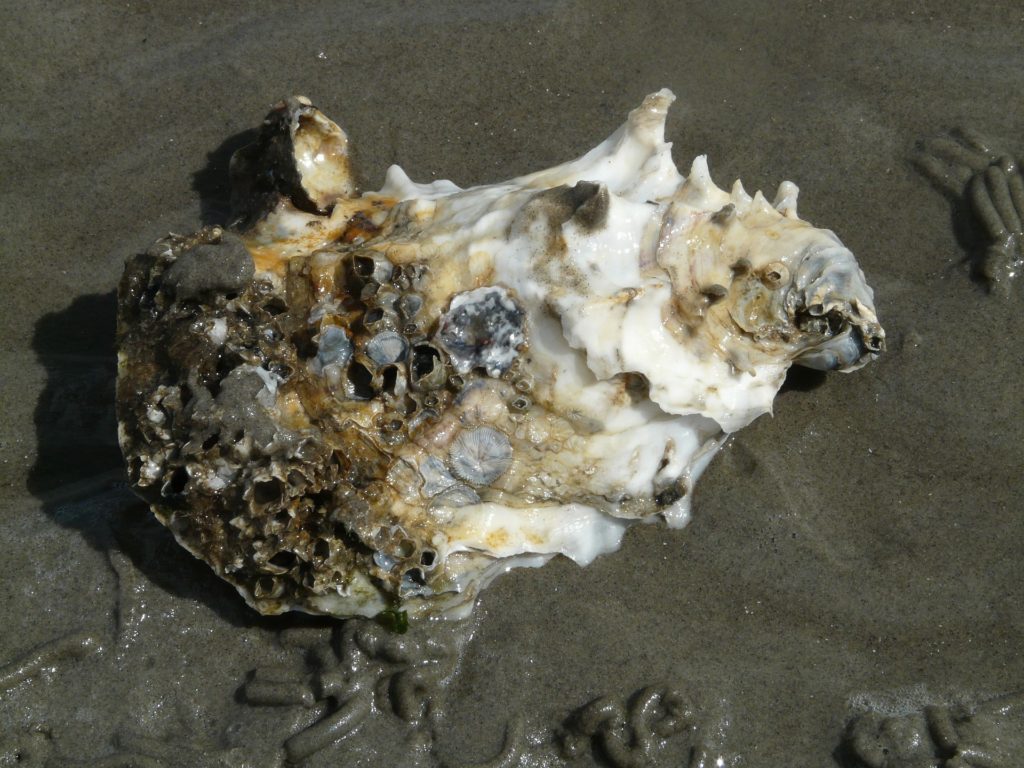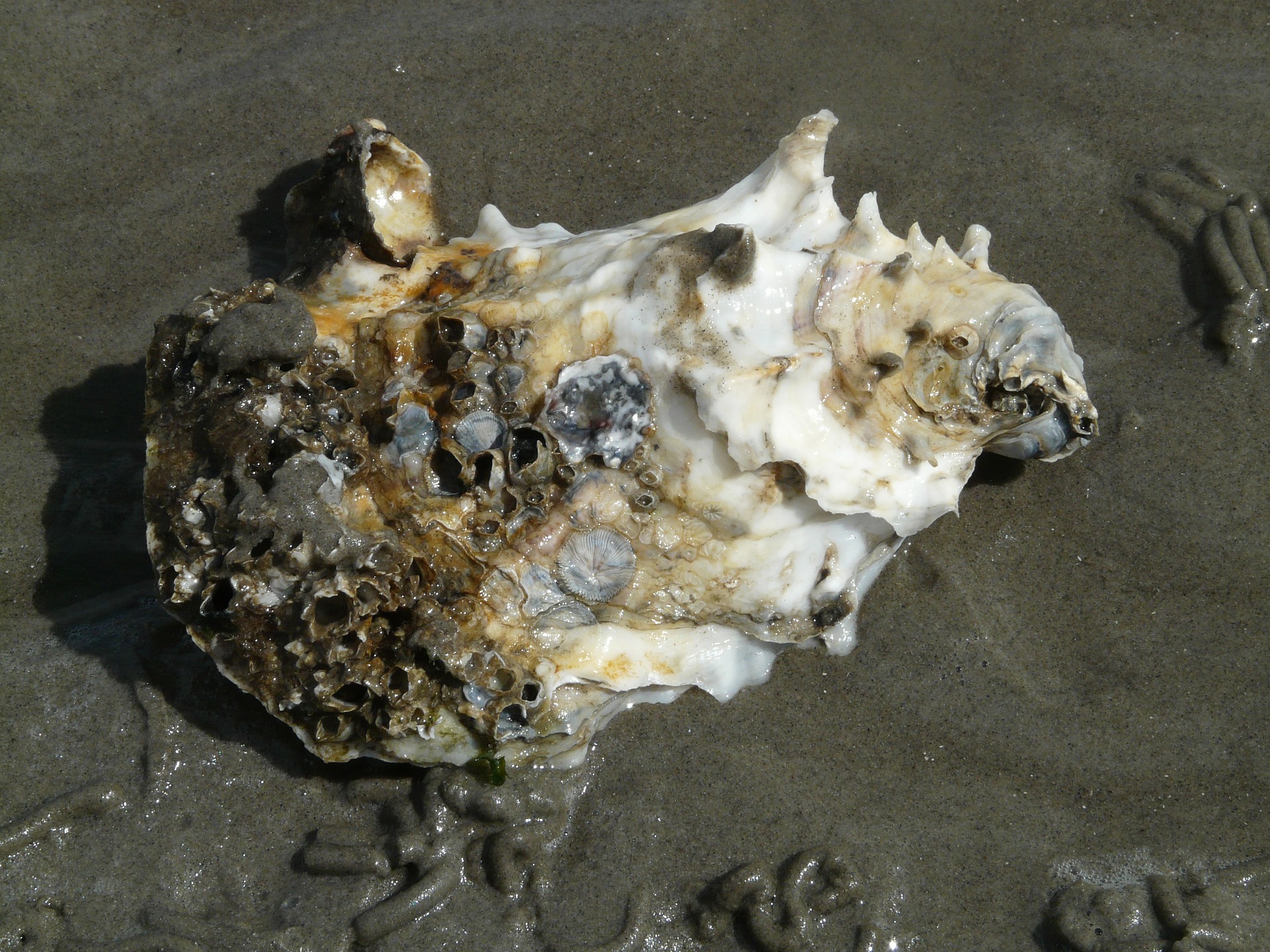Since both oysters and limestone have filtering abilities, they assist in keeping ecosystems healthy, so they can assist in reaching the goal of a balanced and healthy ecosystem as described above. However, the amounts of oysters and limestone found in these ecosystems are dangerously low. In order to restore oyster populations and conserve limestone, it is necessary to have sustainable goals for each issue.
 Sustainability, according to Shore Thing oyster farmer Kevin Boyle, generally refers to “consuming a natural resource at a rate that is slower than or equal to the rate nature can reproduce it.” (Kevin Boyle, personal interview, February 21, 2018) We must find a way to follow Goal 12, responsible consumption and production, or we will lose these precious resources and the benefits they bring to their ecosystems. Oysters are vital to the Chesapeake Bay’s health because they filter water and provide food and habitat for other organisms. Oysters filter water by removing pollution and sediment, helping prevent dead zones from occurring and making water safe for other organisms. Oyster reefs attract fish and provide habitat for smaller organisms. Not only do the oysters filter the water and provide habitat for other fish, but they also give us food and have a tremendous ecological value. Organisms like oysters are known as a “keystone species” because the overall health of the environment depends on the health of these organisms, similar to the way the keystone in an arch sustains the weight of the other stones and is central to holding the arch up. Despite their importance, oyster populations in the Chesapeake Bay have decreased drastically since the 1600’s. As boats became more advanced and were able to travel into deeper water, oyster fishers were able
Sustainability, according to Shore Thing oyster farmer Kevin Boyle, generally refers to “consuming a natural resource at a rate that is slower than or equal to the rate nature can reproduce it.” (Kevin Boyle, personal interview, February 21, 2018) We must find a way to follow Goal 12, responsible consumption and production, or we will lose these precious resources and the benefits they bring to their ecosystems. Oysters are vital to the Chesapeake Bay’s health because they filter water and provide food and habitat for other organisms. Oysters filter water by removing pollution and sediment, helping prevent dead zones from occurring and making water safe for other organisms. Oyster reefs attract fish and provide habitat for smaller organisms. Not only do the oysters filter the water and provide habitat for other fish, but they also give us food and have a tremendous ecological value. Organisms like oysters are known as a “keystone species” because the overall health of the environment depends on the health of these organisms, similar to the way the keystone in an arch sustains the weight of the other stones and is central to holding the arch up. Despite their importance, oyster populations in the Chesapeake Bay have decreased drastically since the 1600’s. As boats became more advanced and were able to travel into deeper water, oyster fishers were able
to harvest more oysters. Pollution from the six states in the Chesapeake Bay’s watershed has also reduced the oyster population. If we continue to pollute the water and harvest oysters at such a high rate, they will eventually die out, taking the rest of the ecosystem with them.
Another thing that is not being responsibly consumed and that is affecting ecosystems and environments is limestone, a valuable natural resource that is popular to mine both above ground and in underground quarries. One specific environment
limestone is affecting is the Estremedura Limestone Massif in Portugal. Limestone has many uses in construction, such as in glass and cement. This is because it is mostly made of calcium carbonate. Calcium carbonate is a chemical compound that is insoluble in water, which is why the calcium carbonate is so useful, specifically in cement. Limestone is also an aquifer, meaning water can flow through it easily. This can affect groundwater negatively because bits of stone and dust coming from the construction site enter and damage the running water. All the contaminants in the runoff can be very harmful to bodies of water and to ecosystems in the water, which can harm marine life.
Limestone mining and oysters relate because of the oyster shells. In light of the fact that limestone mining is environmentally harmful and unsustainable, we will eventually have to find an alternative to traditional limestone mining. The majority of an oyster shell is calcium carbonate. Limestone is mined for this compound, which is why it is in such high demand. Oysters can provide an environmentally friendly and sustainable source of calcium carbonate. In addition, the oysters could filter water and help clean the Chesapeake Bay. This would help us be more responsible with oyster consumption and would also help create a sustainable source of calcium carbonate.
We can help our current environmental issues by replacing the limestone used for concrete with oyster shells that are typically thrown away after being consumed. Since both are composed of similar chemical compounds, we can have restaurants recycle oyster shells and send them to replace limestone in the making of concrete. To also restore the oysters, we can use the recycled concrete to make reef balls that can create oyster reefs. In addition we can support the development of oyster farms that can
restore oyster that are harvested. Despite the fact that recycling of oyster shells will be inconvenient for concrete producers and those who mine limestone, having a healthy environment outweighs those problems. Additionally, we will be following global goal 12 and prevent limestone mining while restoring the oyster populations.




You must be logged in to post a comment.